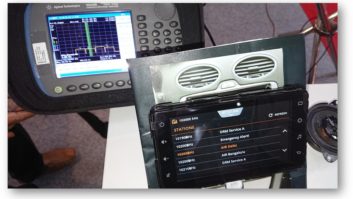
Who wants fading, crackly radio in 2016? Poor sound is no longer on, especially when it devours spectrum and increases energy bills.
For broadcasters the analog shortwave, longwave and medium wave (AM) bands seem to be old hat. AM has been largely ditched or at least halved worldwide compared to 2006, one of its peak years.
Even so, about 25 percent of current BBC World Service listeners (about 130 million) still tune in to shortwave in regions like northern Nigeria for instance.
AM surely suffers from an image problem. Many people still associate it to the Cold War. But, barring the “crackly” interference that can be annoying for listeners and costly to broadcasters, AM offers many advantages. For example it can be used where broadband is not ubiquitous and electricity not on tap — and this covers a lot of territories outside Europe and the United States.
Countries such as India, Russia, Pakistan, Vietnam, Indonesia, Malaysia, South Korea, China, Taiwan and Japan as well as some Arab countries have already recognized and reassessed the possibilities of AM. They are leading the way in replacing AM analog services with digital sound broadcasting systems in order to obtain audio quality close to that of FM and a stable, mobile reception over long distances.
India is progressing rapidly with replacing its AM analog broadcast networks (mainly medium wave) with the Digital Radio Mondiale standard. Just last month Indian public broadcaster, All India Radio, began carrying two popular radio programs over one single frequency in New Delhi in the DRM standard only.
Increasing digital broadcasts will ensure that low-cost DRM30 receivers become widely available. At IBC last year, the prototype of the first DRM30 Indian designed receiver was unveiled. This summer it will be commercially available. In other parts of the world, receiver development is gaining ground. After a recent visit to a DRM test site in Pretoria, the South African Communications Minister Faith Muthambi called for receiver manufacturing to take place directly in the country so as to boost the economy.
But is AM still a real option in 2016 when mobiles, Internet, abound with such vigor? Maybe, Russia and China’s interest in acquiring frequencies abandoned by other broadcasters that are mesmerized by social media should give us pause for thought.
As we know, vinyl records are making a spirited return, while CDs are often seen today just as wind chimes. While tweeting news is all the rage, we should also give the AM bands new clothes and a fresh, holistic assessment. Digital AM gives excellent sound over very large areas at much lower costs and sometimes without any third party interference.
Therefore, instead of bemoaning the scrapped transmitters and lack of listeners, make an effort to preserve them, where realistic.
Like old vinyls, AM is unique. Before binning it, take the opportunity to consider the evidence as well as to carry out a full cost benefit and impact analysis. And while some countries may need more than one digital standard to fulfill their digital ambitions, the availability of multi-standard chipsets should give countries the assurance that they can reach listeners in all corners of the world as well as in their countries with the appropriate quality.
Ruxandra Obreja is the head of Digital Radio Development in the BBC World Service Group and chairman of Digital Radio Mondiale.











